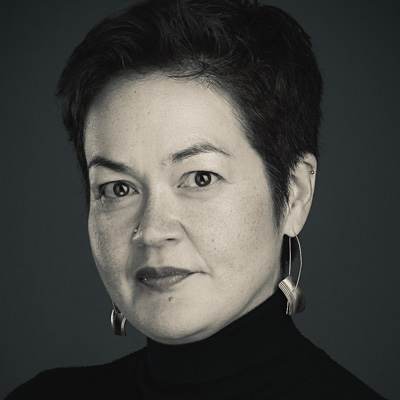Film Festival review: Woman at War
Festivals
The gentle humour and quiet melancholy of Benedikt Erlingsson’s quirky Icelandic saga belies the fierceness of its environmental message.

Forty-nine-year-old Halla (played by Halldóra Geirharðsdóttir) is an eco-activist waging a one-woman guerrilla war against a smelting plant that threatens to destroy the landscape she loves.
When she’s not roaming the Icelandic tundra with a bow and arrow, bringing down the pylons that supply the smelter with power, or fleeing from police helicopters, she’s a warm and well-loved choir director. She practices t’ai chi under the beneficent watch of Nelson Mandela and Mahatma Gandhi, who gaze from posters adorning the walls of her apartment.
The authorities are hot on her trail. After her act of sabotage in the opening scene, Halla has a narrow escape with the help of a farmer on whose land the pylons stand, a gruff character with a kind heart and a dog named “Woman”.
Just as Halla’s campaign is intensifying, she receives a letter informing her that her application to adopt a child years ago has been successful: a four-year-old girl orphaned by war is waiting for her in the Ukraine.
Her campaign is at a crucial stage and she has concerns, but she’s overjoyed, too, that she will become a mother. Halla asks her twin sister Åsa (also played by Geirharðsdóttir) to act as secondary guardian for the adoption, but Åsa tells her she’s about to head to an ashram in India for two years. Any more detail here will spoil the plot.
Three musicians appear and reappear again with tuba, organ and drums at unexpected moments, observing, and interacting with one another. The breaking of the fourth wall adds pleasurable humour, a clever device that steers clear of being contrived. It breathes air into the solitary intensity of Halla’s guerrilla activities, its chorus-like presence elevating the story to a saga.
Once news of Halla’s adoptive daughter-to-be is delivered, the trio is joined by three Ukrainian folk singers in colourful skirts and floral headdresses, singing stirring and full-throated harmonies.
From this point the plot intensifies: there is a first arrest, but of the wrong person, a hapless Spanish-speaking tourist (played by Juan Camillo Roman Estrada, who appeared in Erlingsson’s directorial debut, Of Horses and Men) before the film morphs into something like a thriller.

Get InReview in your inbox – free each Saturday. Local arts and culture – covered.
Thanks for signing up to the InReview newsletter.
The final scene – without giving too much away – pitches a perfect endnote: one which leaves you to decide whether or not there’s hope for humanity in the face of environmental destruction.
Woman at War is visually stylish and graced with superb acting from Geirharðsdóttir. Pulling off the tricky art of delivering an important message without sermonising, this idiosyncratic, warm-hearted and thought-provoking film is a pleasure to watch.
https://www.youtube.com/watch?v=TFxz4oNfBV0
Woman at War has its final Adelaide Film Festival screening this Friday at the Mercury Cinema. See more Adelaide Film Festival stories and reviews here.
Support local arts journalism
Your support will help us continue the important work of InReview in publishing free professional journalism that celebrates, interrogates and amplifies arts and culture in South Australia.
Donate Here






Comments
Show comments Hide comments